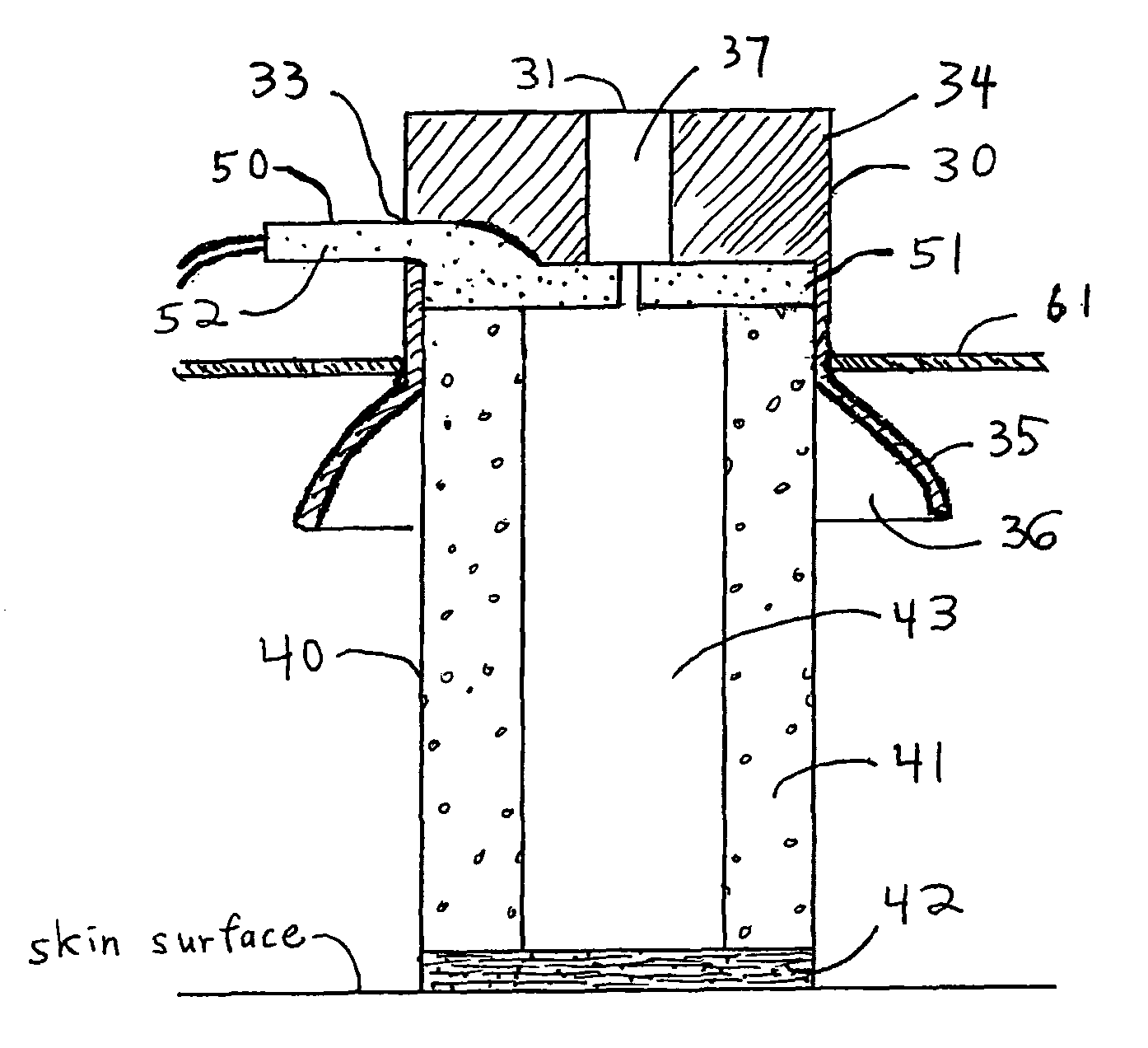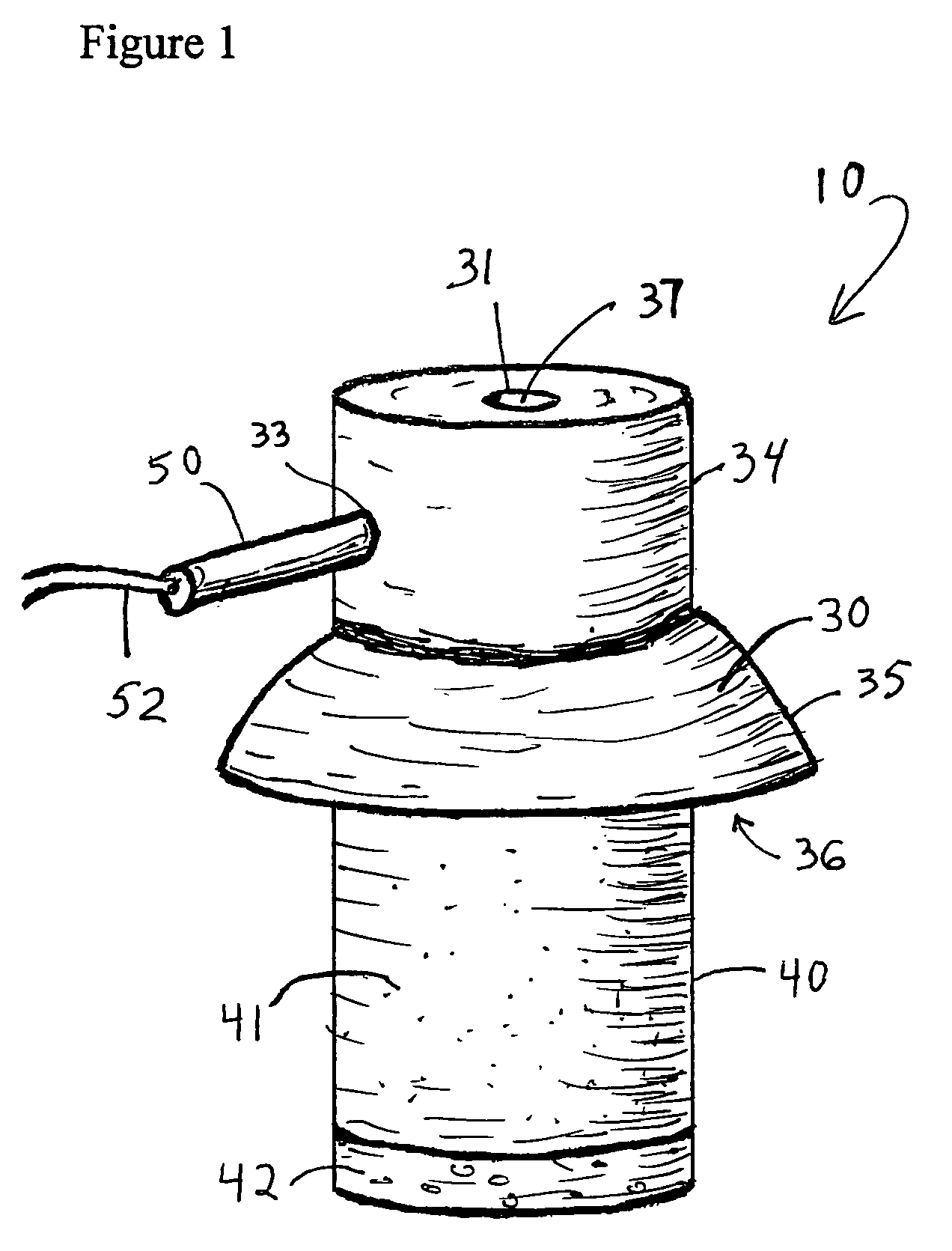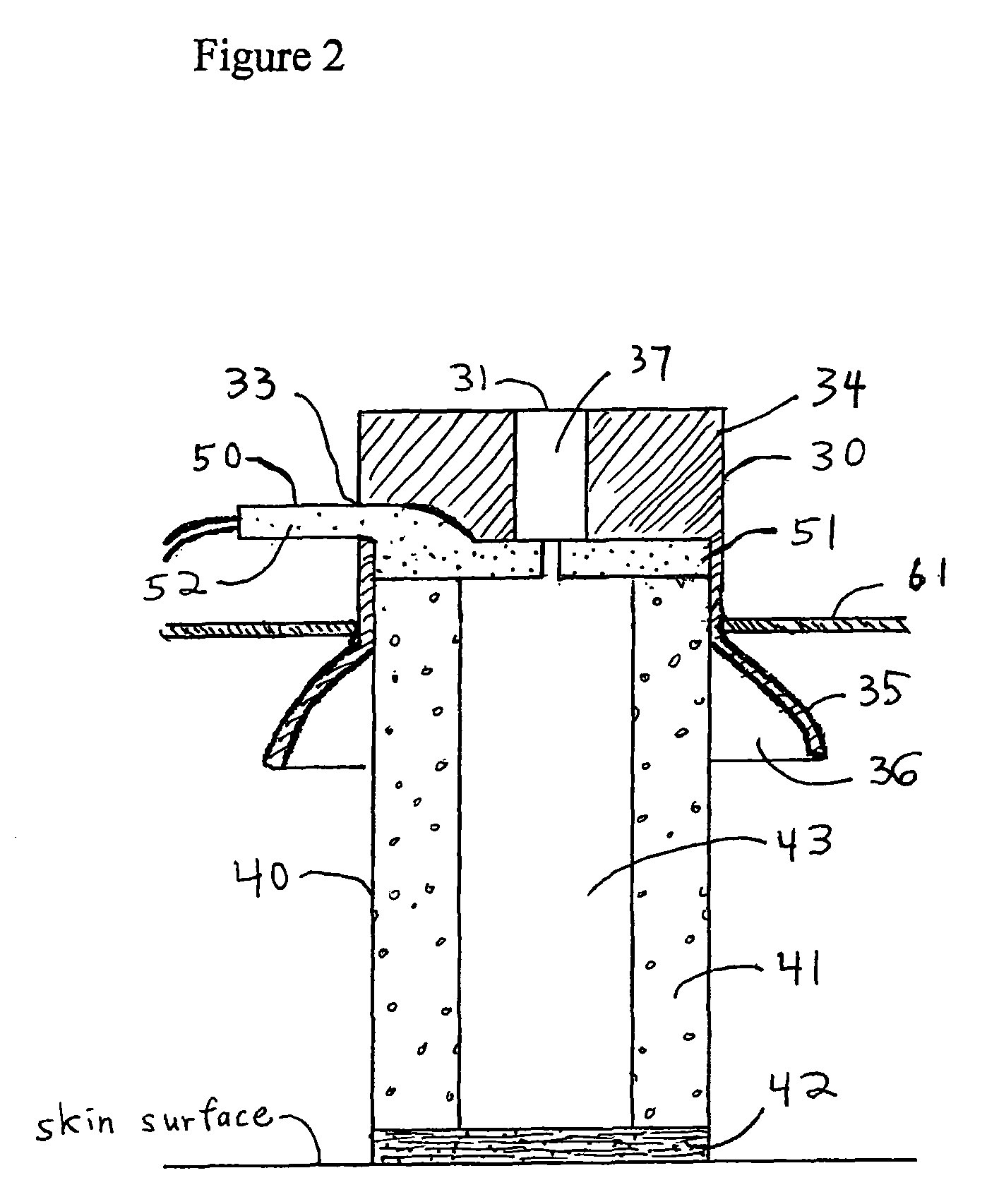Sensor assembly with conductive bridge
a technology of electroencephalogram and sensor assembly, which is applied in the field of electroencephalogram sensor for can solve the problems of messy application of gel and paste, affecting the recording data, and affecting the accuracy of electrophysiological signals, so as to promote accurate low impedance. , the effect of promoting the measurement of electrophysiological signals
- Summary
- Abstract
- Description
- Claims
- Application Information
AI Technical Summary
Benefits of technology
Problems solved by technology
Method used
Image
Examples
Embodiment Construction
[0016]For the purpose of explanation only, the subject invention is described with respect to an embodiment which is adapted for use in recording EEG signals. One skilled in the art can readily ascertain that the subject invention may be applicable for other uses wherein electrophysiological signals are taken.
[0017]The subject invention relates to an electrode assembly 10 comprised of a housing 30, an electrode 50, and a conductive bridge 40.
[0018]As shown in FIG. 2, the subject invention also relates to a conductive bridge 40 placed between electrode 50 and a patient's skin in order to provide a conductive pathway for electrophysiological signals emanating from the patient. As shown in FIG. 1, in one embodiment, the subject conductive bridge 40 is a generally cylindrical (although other shapes may be used) assembly comprised of an expandable member 41 with an absorbent material 42 attached to one end. As shown in FIGS. 2 and 4, an aperture extends through expandable member 41 and t...
PUM
 Login to View More
Login to View More Abstract
Description
Claims
Application Information
 Login to View More
Login to View More - R&D
- Intellectual Property
- Life Sciences
- Materials
- Tech Scout
- Unparalleled Data Quality
- Higher Quality Content
- 60% Fewer Hallucinations
Browse by: Latest US Patents, China's latest patents, Technical Efficacy Thesaurus, Application Domain, Technology Topic, Popular Technical Reports.
© 2025 PatSnap. All rights reserved.Legal|Privacy policy|Modern Slavery Act Transparency Statement|Sitemap|About US| Contact US: help@patsnap.com



